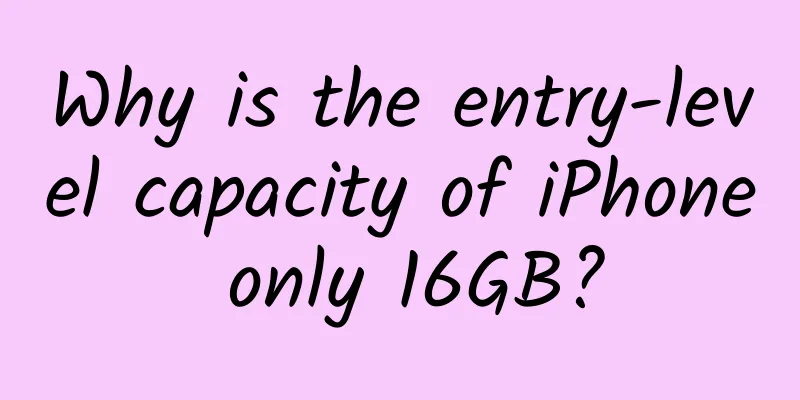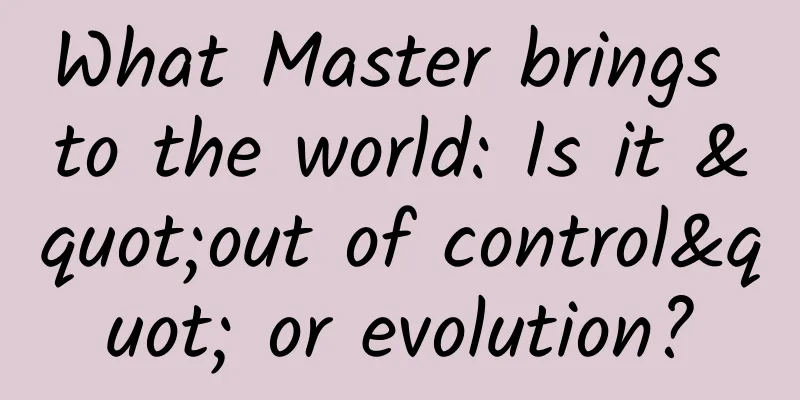Why is the entry-level capacity of iPhone only 16GB?

|
If Apple follows its usual path, its next generation of flagship smartphones (likely the iPhone 6s and 6s Plus) will be released in early September, with sales expected to start on the third Friday of the month. By this time, there are less than 70 days left until the next generation of iPhones goes on sale. Since the rumored product number contains an "s", we expect the new iPhone to have a similar appearance to the iPhone 6, but with some technical changes hidden under the exquisite shell, such as a faster processor, a better camera, and Force Touch touch sensing technology borrowed from the Apple Watch. Unfortunately, the starting capacity of the iPhone 6s may remain the same as the previous generation. According to the pictures leaked by 9to5mac, a technology blog that focuses on Apple news, the Toshiba flash memory module on the logic circuit board indicates that its starting capacity is still 16GB. Although the credibility of these pictures is questionable, the author of this article, Mark Gurman, has successfully revealed information many times before, so these pictures are highly credible. The site says that "last-minute upgrades to larger capacities are not without precedent," but to me it seems like Apple would be taking a big risk by upgrading the starting capacity to 32GB, which is exactly why Apple wouldn't do it. Problems with 16GB The starting capacity of the latest generations of iPhones is 16GB, and if you sign a two-year contract with a carrier in the United States, or if there is a carrier subsidy, the price is $199. But if we choose to buy the bare-metal version, the price in most cases should be $649. When Apple introduced the iPhone 6 last year, the company dropped the 32GB version, and a 64GB iPhone 6 cost $750, or $299 with a contract. For any consumer who knows the true storage capacity of a 16GB iPhone or iPad, buying a 64GB model, or even a 128GB model, is a no-brainer. The reality is that 16GB isn't enough. Once you take a bunch of photos or videos, download a couple of decent games, use one or two complex apps, and store some music, you'll basically hit the limit. Apple said that the iOS 9 upgrade this fall will significantly reduce the capacity requirements for iOS upgrades from 4.6GB to 1.3GB, and reduce the size of applications overall through the slimming function (App Thinning). However, iOS 9 will still take up some space in the phone's flash memory. I have a 64GB iPhone 5s, of which 54.2GB is "used capacity" and "available capacity" is only 1.7GB, which means that about 8GB of capacity is contributed to iOS resources. The new iOS software will help existing iPhone users save some space, but 16GB is still 16GB, and it's consumed faster than you think, especially in an era of rapidly evolving photo and video resolutions, when 4K video may not be far from the iPhone. Minimum capacity means maximum profit So why doesn't Apple upgrade the iPhone's starting capacity to 32GB? After all, most current Android flagship smartphones, such as the Samsung Galaxy S6/S6 Edge, HTC One M9, and LG G4, all have a starting capacity of 32GB. In addition, these smartphones also support storage expansion. The answer is simple: profit margin. After disassembling Apple products, market research firm IHs pointed out that for iPads, iPhones and other Apple products, the cost of upgrading the capacity from 16GB to 32GB was $10 in September last year. With the decline in NAND flash memory prices, it is expected to be even cheaper this year. However, it should be noted that Apple costs about $200 to produce an iPhone 6 and about $215 to produce an iPhone 6 Plus, so $10 can be said to be a considerable expense. In reality, the 64GB iPhone 6 costs users $750, while Apple only pays about $20 more. From a profit margin perspective, the 64GB and 128GB iPhones are more profitable, so Apple's real purpose is to prevent you from buying the 16GB iPhone. Data proves that Apple's strategy of getting consumers to buy larger iPhones is working. In the last quarter of last year, the average selling price of an iPhone reached $687, which was when the iPhone 6 and 6 Plus were launched in large quantities. In contrast, the average selling price of Android phones in the same period was only $254. This is why Apple has become the world's most valuable company while Android phone manufacturers are still struggling for profits. It’s time for a change There is no doubt that Apple's strategy is working. Now, Apple has become a money-printing machine. Many consumers are willing to pay an extra $100 or $200 to buy an iPhone with a larger storage capacity. At present, US operators are moving towards the post-contract era, allowing consumers to pay for their phones in two-year installments, which makes Apple's development even more advantageous. If you calculate, upgrading to a 64GB iPhone will cost a little more than $4 per month, which is equivalent to drinking one or two less lattes per month. Does that mean there is no point in buying a 16GB iPhone? Of course, this is not the case. Some people just can't resist the temptation of cheap products, and will buy them even if they know it won't maximize their own interests. In some cases, companies choose to buy iPhones for their employees, and the entry-level capacity is a better choice because the boss wants employees to use the phone for work, not playing games or taking videos about their children. In addition, low-capacity mobile phones also have a market in developing countries because local consumers are more sensitive to product prices. For example, the iPhone 5C, Apple's entry-level product, currently costs $450. When Apple released the new iPhone 6 last year, it immediately reduced the price of this product by $100. This more affordable iPhone is still on sale. In addition, Apple reduced its capacity to 8GB, which is only enough to support the current iOS software. However, now that a lot of content can be stored on the Internet, the capacity of the phone itself does not seem to be so important. This is also the reason why Phil Schiller, Apple's senior vice president of global marketing, defended the current 16GB devices. Schiller said that the existing iCloud and cloud services such as Apple Music will help those price-sensitive users "live in an environment where they don't need much local capacity." It would be great if Apple Music and iCloud could provide more than 5GB of storage for free. However, in fact, they are not so generous. Consumers still have to pay for the storage above 5GB, and the price is more expensive than similar cloud services. Therefore, the current situation cannot but make people complain. Apple has created its own troubles, and consumers will eventually pay for it. This approach is obviously wrong. |
<<: Can you write high-quality Objective-C code?
>>: Re/code editor tries out iOS 9: Upgrading is not recommended at this time
Recommend
Trivia | Eight must-check websites before getting married
One minute with the doctor, the postures are cons...
What should you do when you try hard to fall asleep but can't?
The lives of modern people are becoming increasin...
Tesla's door locks have a security flaw that can be easily stolen in seconds
The Verge reported on September 11 Beijing time t...
How to move a 200-ton hotel? Just 700 bars of soap
What tools are needed to move a building? Recentl...
China's history of playing in the snow: a picture takes you through the "10,000-year love affair with ice and snow"
Producer: Lu Gang Editor: Zhao Cen Proofreading: ...
The hoopoe's Mohawk hairstyle is actually showing off "I stink!"?
The hoopoe (Upupa epops), one of the most widespr...
How to advance a brand? Start with these 3 systems
There is a process for consumers to come into con...
The display effect of 4.7-inch iPhone 6 is like this
What will the iPhone 6 UI look like after it becom...
Cancer is caused by "saving"! Doctors reveal the truth! This bad habit must be changed
Experts in this article: Hu Houxiang, Chief Physi...
WeChat's fourth outage in 2015 is under emergency repair
On the morning of November 6, a large number of u...
QQ track screen: first-rate card picking, second-rate card skills, third-rate marketing
In 1999, Tencent QQ was born. In the past 20 year...
Analysis of Taobao APP user system operation
This article attempts to be a systematic design g...
Do you feel knee pain when you exercise? Beware of meniscus wear! Don’t do these actions again →
What is the meniscus? What is its function? What ...
7 eating habits that cancer cells love most. Avoid them from now on
Planning and production Author: Pan Zhanhe, Chief...
Short video operation, here are 6 quick questions to answer
There have been a lot of content posted on Kuaish...


![Marketing node reminder in January 2018 [Dry goods collection]](/upload/images/67cc1646baa30.webp)






